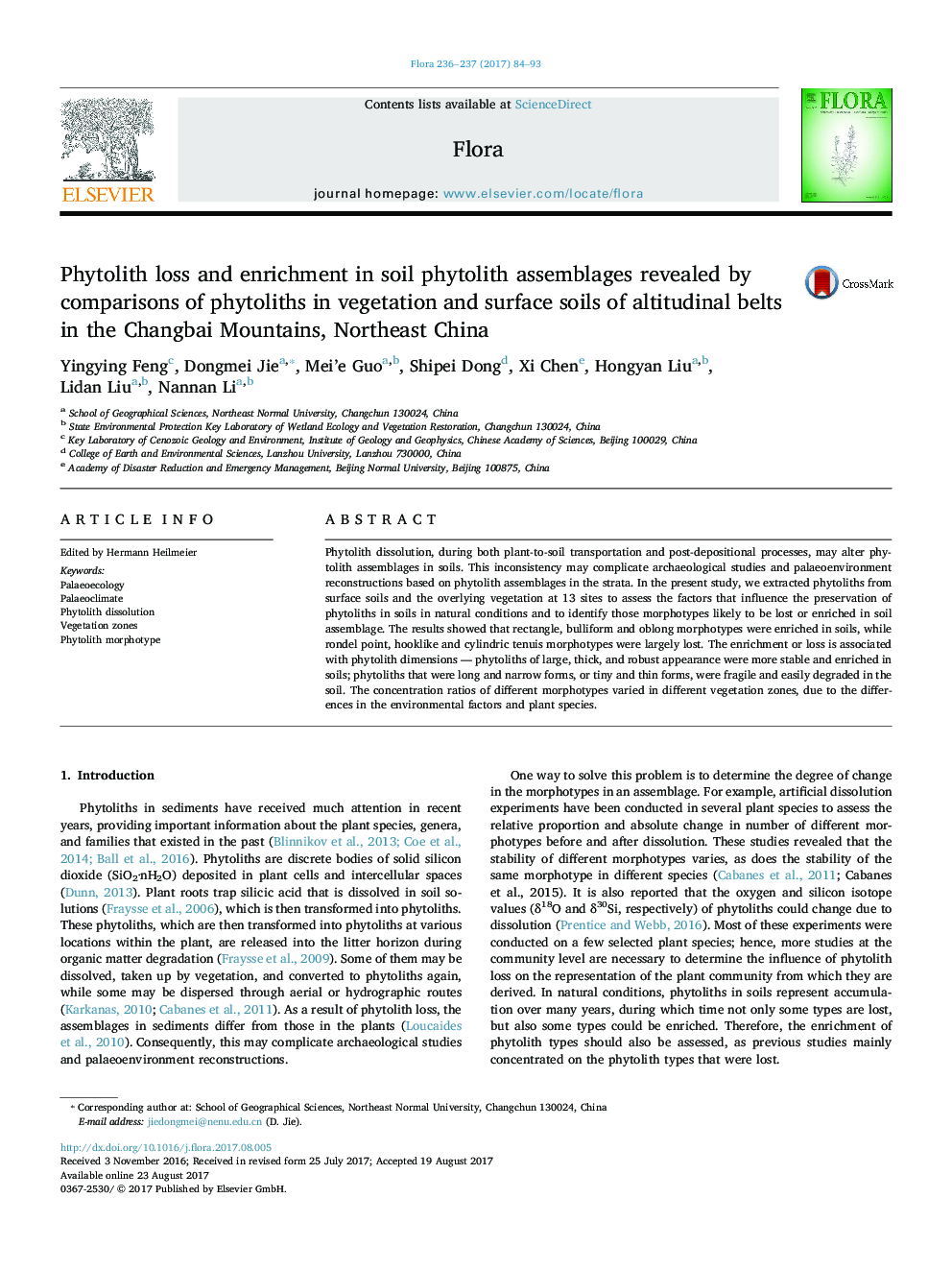| Article ID | Journal | Published Year | Pages | File Type |
|---|---|---|---|---|
| 5532293 | Flora - Morphology, Distribution, Functional Ecology of Plants | 2017 | 10 Pages |
â¢First study to determine the influence of phytolith loss on the representation of the plant community from which they are derived.â¢Information on the reliability of each phytoltih type when it is used to reconstruct palaeo-environment or palaeo-climate.â¢Phytoliths of large, thick, and robust appearance were more stable and enriched in soils.â¢Phytoliths that were long and narrow forms, or tiny and thin forms, were fragile and easily degraded in the soil.
Phytolith dissolution, during both plant-to-soil transportation and post-depositional processes, may alter phytolith assemblages in soils. This inconsistency may complicate archaeological studies and palaeoenvironment reconstructions based on phytolith assemblages in the strata. In the present study, we extracted phytoliths from surface soils and the overlying vegetation at 13 sites to assess the factors that influence the preservation of phytoliths in soils in natural conditions and to identify those morphotypes likely to be lost or enriched in soil assemblage. The results showed that rectangle, bulliform and oblong morphotypes were enriched in soils, while rondel point, hooklike and cylindric tenuis morphotypes were largely lost. The enrichment or loss is associated with phytolith dimensions - phytoliths of large, thick, and robust appearance were more stable and enriched in soils; phytoliths that were long and narrow forms, or tiny and thin forms, were fragile and easily degraded in the soil. The concentration ratios of different morphotypes varied in different vegetation zones, due to the differences in the environmental factors and plant species.
